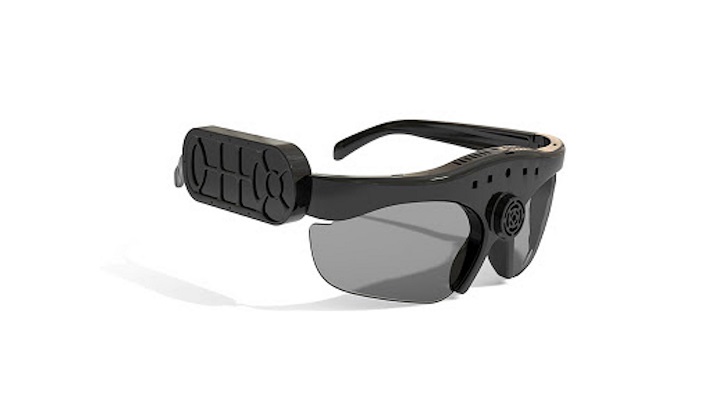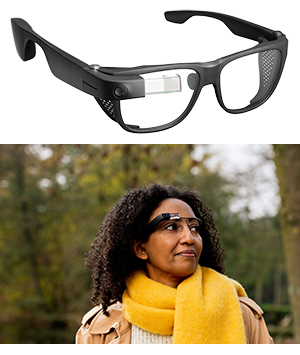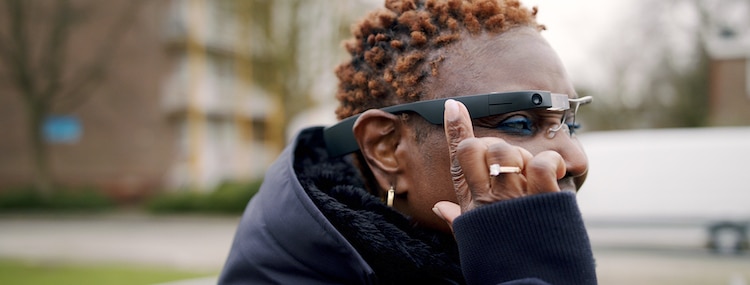Enhancing Access Through Assistive Modern Technology for the Blind
The combination of assistive modern technology for the blind represents an essential advancement in ease of access, basically changing just how people navigate their atmospheres and involve with society. From screen visitors to cutting-edge smart walking sticks, these devices not just boost self-reliance but additionally promote inclusivity in various balls of life. As we check out the varied sorts of assistive gadgets and their concrete effects on daily living, it comes to be important to analyze exactly how ongoing technical advancements are improving the landscape of support for the blind area. What effects do these growths hold for the future of accessibility?
Overview of Assistive Innovation
Assistive innovation describes a range of tools and software application developed to enhance the capacities of individuals with specials needs, including those that are visually damaged or blind. This modern technology plays a vital role in promoting self-reliance and enhancing the lifestyle for customers. By supplying alternate approaches for accessing info and carrying out day-to-day jobs, assistive technology empowers individuals to navigate their settings better.
The growth and application of assistive technology welcome a selection of concepts aimed at fostering accessibility. These concepts consist of user-centered style, which focuses on the requirements and choices of the individual, and the integration of technology into daily tasks. Such innovations ensure that assistive devices are not only practical yet very easy and also intuitive to make use of.
Furthermore, assistive technology includes a diverse range of remedies, from low-tech alternatives like magnifiers to high-tech innovations such as screen viewers and Braille displays. The recurring evolution of this field is driven by the requirement to address the one-of-a-kind difficulties dealt with by individuals with visual problems (Wearable technology for low vision). As innovation continues to breakthrough, the potential for improving availability and promoting inclusivity stays encouraging, inevitably contributing to an extra equitable society

Kinds Of Assistive Gadgets
Various kinds of assistive devices are available to sustain people who are blind or visually damaged, each developed to deal with specific needs and difficulties. These gadgets can be generally classified into 3 main types: low-tech, mid-tech, and state-of-the-art solutions.
Low-tech devices include things such as magnifiers, Braille tags, and tactile maps. These are relatively basic devices that boost the individual's capacity to interact with their setting without requiring complex innovation.
Mid-tech gadgets commonly include extra innovative attributes, such as digital magnifiers and mobile Braille note-takers. These gadgets can provide capabilities like speech outcome, permitting users to gain access to details a lot more efficiently.

Effect on Daily Living
The availability of numerous assistive gadgets substantially improves the lifestyle for people who are blind or aesthetically impaired, influencing their day-to-day living in profound methods. By incorporating innovations such as display readers, Braille displays, and audio summary services right into their regimens, customers gain better autonomy and freedom. These devices facilitate access to information, enabling individuals to execute eye test daily jobs, such as reading e-mails, navigating public areas, and taking pleasure in media web content.
Additionally, assistive gadgets encourage people to involve even more completely in social communications and community activities. The capacity to make use of mobile phones geared up with accessibility features permits for smooth interaction and connection with others. This connectivity cultivates a sense of belonging and decreases sensations of isolation.
In expert settings, assistive innovation sustains productivity by allowing people to full job jobs effectively. Devices like voice acknowledgment software and specialized magnifying gadgets enable customers to participate in the workforce on equal ground with their sighted peers.

Developments in Technology
Current technological improvements have actually substantially transformed the landscape of devices available for people that are visually impaired or blind. The assimilation of expert system (AI) and artificial intelligence has triggered applications that boost navigation and things recognition. For instance, smart device apps can now utilize AI to recognize and define environments in real-time, supplying individuals with beneficial contextual info.
Furthermore, improvements in haptic modern technology have resulted in the growth of smart walking canes equipped with sensors that detect obstacles and provide responsive comments. This empowers individuals to navigate their environment with raised self-confidence and independence. Advancements in text-to-speech software application and braille display screens have actually enhanced the accessibility of electronic content, allowing for smooth interaction with various media.
Wearable innovations, such Visit Website as clever glasses, are also making strides in aiding aesthetic disability. As innovation proceeds to develop, the potential for also more transformative tools continues to be on the perspective.
Future Trends and Innovations
As modern technology quickly progresses, the future of assistive tools for people that are blind holds enormous promise. Developments in expert system (AI) and artificial intelligence are positioned to change the means blind users engage with their settings. AI-driven applications are being established to improve things acknowledgment, enabling customers to determine and navigate their environments with higher simplicity and accuracy.
Furthermore, innovations in haptic responses modern technology are enabling the development of tactile maps and navigating aids that provide real-time info via touch. These developments not just improve movement however additionally foster freedom. Additionally, wearable gadgets equipped with enhanced reality (AR) functions are arising, providing users aesthetic info via audio descriptions, thereby bridging the space in between the physical and electronic worlds.
In addition, the assimilation of clever home technology provides brand-new chances for ease of access, permitting people to control their living atmospheres via voice commands or mobile phone applications. As cooperation in between tech designers and the blind neighborhood continues, the concentrate on user-centered layout will certainly make certain that future advancements are tailored to satisfy the unique requirements of this populace (Wearable technology for low vision). The trajectory of assistive innovation promises a much more empowering and inclusive future for individuals who are blind
Verdict
To conclude, assistive technology see this here plays an essential duty in enhancing ease of access for individuals with aesthetic impairments. The diverse array of tools, consisting of display visitors and wise walking sticks, substantially boosts everyday living and fosters freedom. Continuous developments in innovation and user-centered layout guarantee that these devices cater properly to the special requirements of the blind community. As advancements progression, increased inclusivity and empowerment can be expected, inevitably improving the lifestyle for those influenced by aesthetic disabilities.
The assimilation of assistive modern technology for the blind represents an essential innovation in availability, basically modifying exactly how individuals navigate their environments and involve with society.Assistive modern technology refers to a variety of tools and software program created to improve the capabilities of people with handicaps, including those who are blind or visually impaired. Wearable technology for low vision.As innovation rapidly proceeds, the future of assistive tools for individuals who are blind holds tremendous pledge. The trajectory of assistive innovation promises a more empowering and inclusive future for people that are blind
In verdict, assistive innovation plays a vital duty in boosting accessibility for people with visual disabilities.